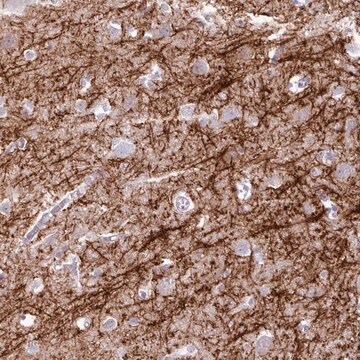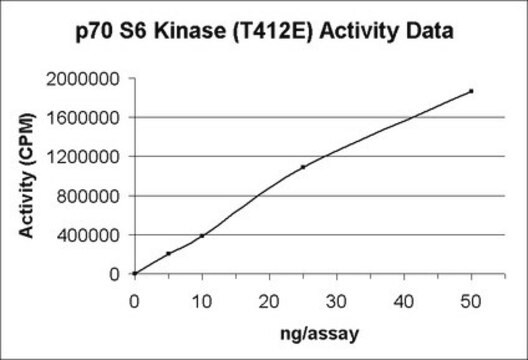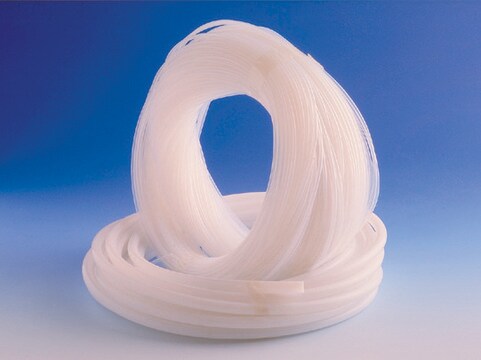14-327-M
JNK1α1/SAPK1c Protein, active, 10 µg
Active, recombinant full-length human JNK1α1/SAPK1c with an N-terminal His-tag, for use in Kinase Assays.
About This Item
Produits recommandés
Source biologique
human
Niveau de qualité
Produit recombinant
expressed in Sf21 cells
Gamme de produits
Upstate®
Activité spécifique
(For Specific Activity data, refer to the Certificate of Analysis for individual lots of this enzyme.)
Poids mol.
Mw 45 kDa
Produit purifié par
(Ni2+/NTA-agarose)
Espèces réactives
human
Fabricant/nom de marque
Upstate®
Technique(s)
activity assay: suitable (kinase)
Numéro d'accès
(FUNCTION: SwissProt: P45983 # JNK1 isoforms display different binding patterns: beta-1 preferentially binds to c-Jun, whereas alpha-1, alpha-2, and beta- 2 have a similar low level of binding to both c-Jun or ATF2. However, there is no correlation between binding and phosphorylation, which is achieved at about the same efficiency by all isoforms. )
NM_002750.2
Numéro d'accès NCBI
Numéro d'accès UniProt
Informations sur le gène
human ... MAPK8(5599)
Description générale
Conditionnement
Also available in 250μg size (catalog number 14-327M).
Qualité
Description de la cible
Autres remarques
Informations légales
Clause de non-responsabilité
Mention d'avertissement
Warning
Mentions de danger
Conseils de prudence
Classification des risques
Skin Sens. 1
Code de la classe de stockage
10 - Combustible liquids
Classe de danger pour l'eau (WGK)
WGK 1
Point d'éclair (°C)
Not applicable
Certificats d'analyse (COA)
Recherchez un Certificats d'analyse (COA) en saisissant le numéro de lot du produit. Les numéros de lot figurent sur l'étiquette du produit après les mots "Lot" ou "Batch".
Déjà en possession de ce produit ?
Retrouvez la documentation relative aux produits que vous avez récemment achetés dans la Bibliothèque de documents.
Notre équipe de scientifiques dispose d'une expérience dans tous les secteurs de la recherche, notamment en sciences de la vie, science des matériaux, synthèse chimique, chromatographie, analyse et dans de nombreux autres domaines..
Contacter notre Service technique








